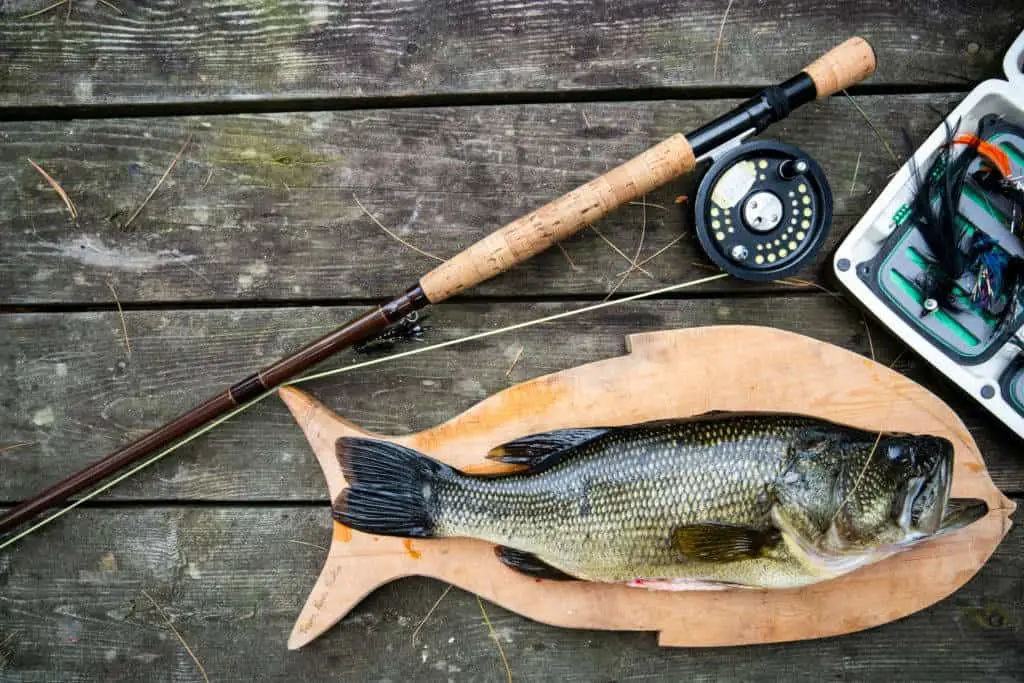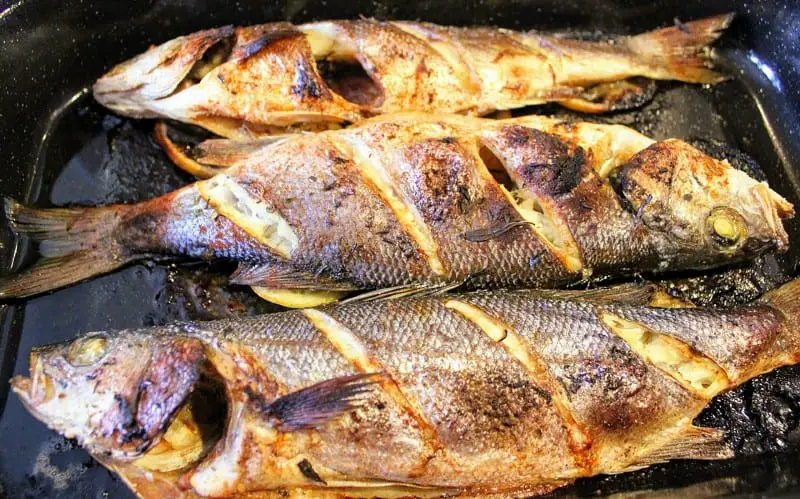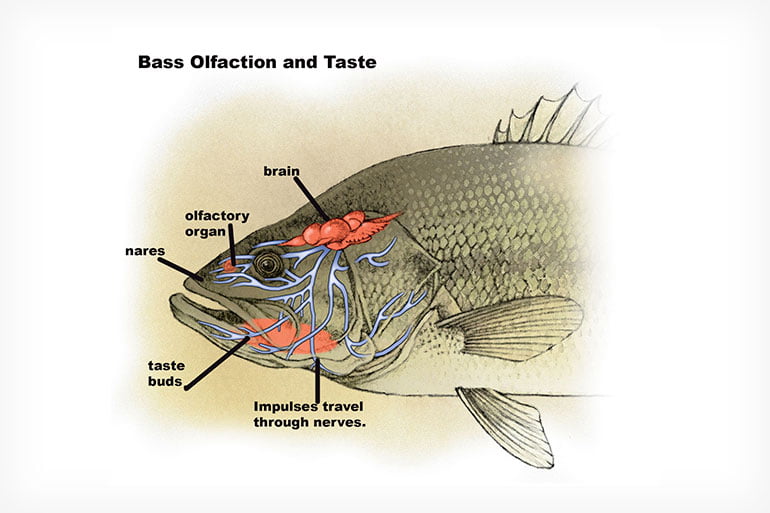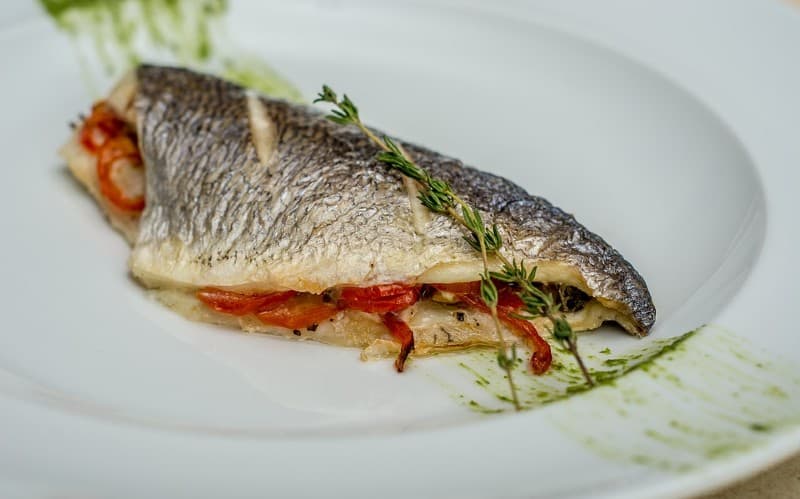Have you ever wondered what the delectable taste of largemouth bass is like? Well, prepare to be pleasantly surprised! In this article, we will unravel the mysteries behind the flavor profile of the largemouth bass, a popular fish among fishing enthusiasts and culinary enthusiasts alike. From its tender and flaky texture to its rich and savory taste, the largemouth bass offers a delightful dining experience that will leave your taste buds craving for more. So without further ado, let’s discover the mouthwatering world of largemouth bass cuisine.

Appearance
Size and shape
Largemouth bass are known for their impressive size and shape. They can reach lengths of up to two feet and weigh anywhere from four to six pounds on average. Some even grow to be much larger, with reports of these fish weighing over 20 pounds. Their bodies are elongated and streamlined, allowing them to move swiftly through the water. The upper part of their body is generally dark green or black in color, while their underside is a lighter shade of green or yellow.
Coloration
The coloration of largemouth bass can vary depending on their environment and mood. When in their natural habitat, their coloration helps them blend in with their surroundings. The dark green or black color on their back provides excellent camouflage, making them difficult for prey to spot. Their lighter green or yellow underside helps to further mask their presence in the water. When they are on the hunt, their coloration can become more vibrant, with their dark markings becoming even more pronounced.
Habitat
Freshwater lakes and rivers
Largemouth bass can be found in a variety of freshwater habitats, including lakes, rivers, and reservoirs. They prefer clear or slightly murky waters with plenty of vegetation. These fish are expert adapters and can thrive in both warm and cool water conditions. They are known to inhabit areas with structure, such as fallen trees, weed beds, and submerged vegetation. These structures provide them with cover and opportunities to ambush their prey.
Weed beds and submerged vegetation
Weed beds and submerged vegetation are prime areas to find largemouth bass. These areas provide an abundance of food sources, such as insects, smaller fish, and crayfish. The vegetation also provides cover, allowing the bass to conceal themselves while waiting for their next meal. When fishing for largemouth bass, it’s important to target these areas and present your bait or lure in a way that mimics the natural movement of their prey.
Diet
Carnivorous feeding habits
Largemouth bass are classified as carnivorous predators, meaning their diet consists mainly of other animals. They are opportunistic feeders and will consume a wide variety of prey items. Their feeding habits can vary depending on the availability of food sources within their environment. Some of their favorite meals include smaller fish, crayfish, frogs, insects, and even small mammals such as mice or shrews. They are voracious hunters and use their sharp teeth and powerful jaws to capture and swallow their prey.
Prey items
Largemouth bass have a diverse palate and will consume almost anything that fits into their mouth. Some common prey items for largemouth bass include:
- Minnows and small baitfish: Largemouth bass are known to target schools of minnows or other small baitfish. They use their speed and agility to ambush and capture these smaller prey items.
- Crayfish: Crayfish are a favorite food source for largemouth bass. They have a hard exoskeleton, but the bass’s sharp teeth and powerful jaws allow them to crush and consume these tasty crustaceans.
- Frogs and tadpoles: Largemouth bass are skilled at hunting and capturing amphibians. They will often lurk near the edges of ponds or shallow waters, waiting for an opportunity to snatch a passing frog or tadpole.
- Insects: Larger insects such as grasshoppers, dragonflies, and even small birds can become targets for hungry largemouth bass. These fish will often strike at anything that lands on or near the water’s surface.
It’s important to consider the prey items in the specific body of water you are fishing in, as the availability and abundance of certain prey will influence the success of your fishing techniques.
Fishing Techniques
Bait and lures
When it comes to fishing for largemouth bass, there are a variety of bait and lure options that can be effective. Some popular choices include:
- Live bait: Using live bait, such as minnows or crayfish, can be highly effective in attracting largemouth bass. Hook the bait through the lip or tail and allow it to swim naturally in the water.
- Soft plastic baits: Soft plastic baits, such as worms or creature baits, can be rigged on a Texas or Carolina rig to mimic the movement of natural prey. These versatile baits can be cast, flipped, or pitched into structures where largemouth bass are likely to be hiding.
- Spinnerbaits: Spinnerbaits are a popular choice for largemouth bass fishing. They consist of a metal arm with one or more spinning blades and a skirted hook. The blades create vibration and flash, attracting the attention of nearby bass.
- Topwater lures: Topwater lures, such as poppers, frogs, or buzzbaits, are designed to imitate prey that is on or near the water’s surface. These lures can elicit explosive strikes from hungry largemouth bass.
Preferred fishing times
Largemouth bass are most active during the early morning and late afternoon hours. During these times, they are often found near the surface, actively feeding. They tend to retreat to deeper water during the middle of the day when the sun is high and the temperatures are warmer. However, it’s worth noting that fishing for largemouth bass can still be productive throughout the day, especially when using the right techniques and targeting the areas where they are likely to be hiding.
Special considerations
When fishing for largemouth bass, it’s important to consider the surrounding environment and adjust your techniques accordingly. Pay attention to weather conditions, water temperature, and the overall behavior of the fish. Largemouth bass may become more active in cooler water and may seek deeper areas during warmer months. Also, keep in mind that these fish are highly sensitive to noise and vibrations, so approach fishing areas with caution and aim for a stealthy approach.

Preparation Methods
Cleaning and scaling
Before cooking largemouth bass, it’s important to properly clean and scale the fish. Use a sharp knife to remove the scales by scraping from the tail to the head. Cut along the belly of the fish, starting from the anal vent to the gills. Remove the internal organs and clean the cavity thoroughly. Rinse the fish under cold water to remove any remaining scales, blood, or debris.
Cooking techniques
Largemouth bass can be cooked using a variety of techniques, depending on personal preference and desired flavors. Here are some popular cooking methods:
- Fried: Frying largemouth bass is a classic preparation method that results in a crispy and flavorful dish. Coat the fish in flour or breadcrumbs, season with salt and pepper, and deep fry until golden brown.
- Grilled: Grilling largemouth bass enhances its natural flavor and imparts a smoky taste. Brush the fish with oil or marinade, season with herbs and spices, and grill over medium-high heat until the flesh is opaque and flakes easily with a fork.
- Baked: Baking largemouth bass is a simple and healthy preparation method. Place the fish in a baking dish, season with herbs and spices, and bake in a preheated oven at 375°F (190°C) until the flesh is tender and flakes easily.
- Broiled: Broiling largemouth bass allows for quick and even cooking. Place the fish on a broiler pan, season with salt and pepper, and broil on high for about 8-10 minutes, or until the flesh is opaque and flakes easily.
- Pan-seared: Pan-searing largemouth bass creates a crispy outer crust while keeping the flesh moist and tender. Heat oil or butter in a skillet over medium-high heat, and cook the fish for about 4-5 minutes on each side, until golden brown and cooked through.
Popular recipes
There are countless recipes available for cooking largemouth bass, each highlighting different flavors and culinary styles. Some popular recipes include:
- Lemon Herb Grilled Largemouth Bass: Marinate the fish in a mixture of lemon juice, garlic, and herbs, then grill until cooked through. Serve with a side of roasted vegetables or a fresh salad.
- Cajun Blackened Largemouth Bass: Season the fish with a blend of Cajun spices and herbs, then cook in a cast-iron skillet until the seasoning forms a blackened crust. Serve with rice or cornbread for a spicy and flavorful meal.
- Beer Battered Fried Largemouth Bass: Dip the fish in a beer batter, then deep fry until golden and crispy. Serve with tartar sauce and a side of fries for a classic fish and chips experience.
Remember to experiment with different recipes and cooking techniques to find your favorite way to enjoy the delicious flavors of largemouth bass.
Flavor Profile
Mild and versatile taste
Largemouth bass offer a mild and versatile taste that can be likened to other freshwater species such as trout or perch. The white meat is tender and delicate, with a subtle sweetness that pairs well with a variety of seasonings and cooking methods. This versatility allows largemouth bass to be incorporated into a wide range of dishes and cuisines.
Similarity to other fish species
Largemouth bass shares similarities in taste with other fish species found in freshwater environments. Some say it resembles the flavor of walleye, while others compare it to the mildness of catfish or tilapia. However, it’s worth noting that the taste can vary depending on the specific habitat and diet of the fish. Factors such as water quality and the availability of food sources can influence the flavor profile of largemouth bass.

Texture
Firm and flaky
Largemouth bass has a firm texture that holds up well to various cooking methods. The flesh is flaky and tends to break apart easily when cooked. This texture adds a pleasant mouthfeel to each bite and makes it enjoyable to eat. Whether pan-seared, grilled, or baked, the firm and flaky texture of largemouth bass remains consistent.
Moist and tender
Despite its firmness, largemouth bass has a moist and tender flesh that is incredibly satisfying to eat. The natural oils within the fish help to keep it moist during the cooking process, ensuring a succulent and flavorful result. This moist and tender texture is one of the reasons why largemouth bass is highly sought after by avid anglers and seafood enthusiasts alike.
Health Benefits
Rich in protein
Largemouth bass is a good source of high-quality protein, making it a nutritious addition to any diet. Protein is essential for the growth and repair of body tissues, and it also plays a role in the proper functioning of enzymes, hormones, and antibodies. Including largemouth bass in your meals can help meet your daily protein needs.
Source of omega-3 fatty acids
Largemouth bass contains omega-3 fatty acids, which are beneficial for heart health and brain function. These essential fatty acids have been shown to reduce the risk of cardiovascular diseases, lower inflammation in the body, and support cognitive health. Consuming largemouth bass as part of a balanced diet can contribute to a healthy intake of omega-3 fatty acids.
Nutritional value
Largemouth bass is a nutritionally rich fish that offers several important vitamins and minerals. It is a good source of vitamin D, which is necessary for the absorption of calcium and the maintenance of bone health. Largemouth bass also provides minerals such as potassium, magnesium, and selenium, which are essential for various bodily functions.

Culinary Uses
Fried
Frying largemouth bass is a popular and traditional method of preparation. The crispy outer coating created by frying adds a delightful texture and enhances the natural flavors of the fish. Fried largemouth bass can be enjoyed as a main course alongside side dishes like french fries or coleslaw.
Grilled
Grilling largemouth bass is a healthy and flavorful way to enjoy this versatile fish. The grill imparts a smoky taste and leaves distinct grill marks on the fish, adding to its visual appeal. Grilled largemouth bass pairs well with grilled vegetables and a squeeze of lemon for a light and satisfying meal.
Baked
Baking largemouth bass is a simple and convenient way to prepare this fish. By baking the fish, the flavors remain intact, and the flesh becomes tender and juicy. Largemouth bass can be baked whole or in fillets, and can be seasoned with herbs, spices, or a marinade for added flavor.
Broiled
Broiling largemouth bass quickly cooks the fish while keeping it moist and flavorful. The high heat of the broiler gives the fish a slightly charred and caramelized crust. Broiled largemouth bass is delicious when served with a side of steamed vegetables or a fresh salad.
Pan-seared
Pan-searing largemouth bass results in a crispy and golden exterior, while the flesh remains moist and tender. The high heat of the skillet allows for a quick and even sear, enhancing the natural flavors of the fish. Pan-seared largemouth bass is best enjoyed with a squeeze of lemon and a side of roasted potatoes or sautéed greens.
Conclusion
Largemouth bass is not only a prized catch for anglers but also a delicious and versatile fish to enjoy in the kitchen. With its mild and versatile taste, firm and flaky texture, and abundance of health benefits, largemouth bass offers a wide range of culinary possibilities. Whether you choose to fry, grill, bake, broil, or pan-sear, largemouth bass is sure to satisfy your seafood cravings. So the next time you reel in a largemouth bass, don’t hesitate to bring it to the dinner table and discover the delightful flavors this fish has to offer.





